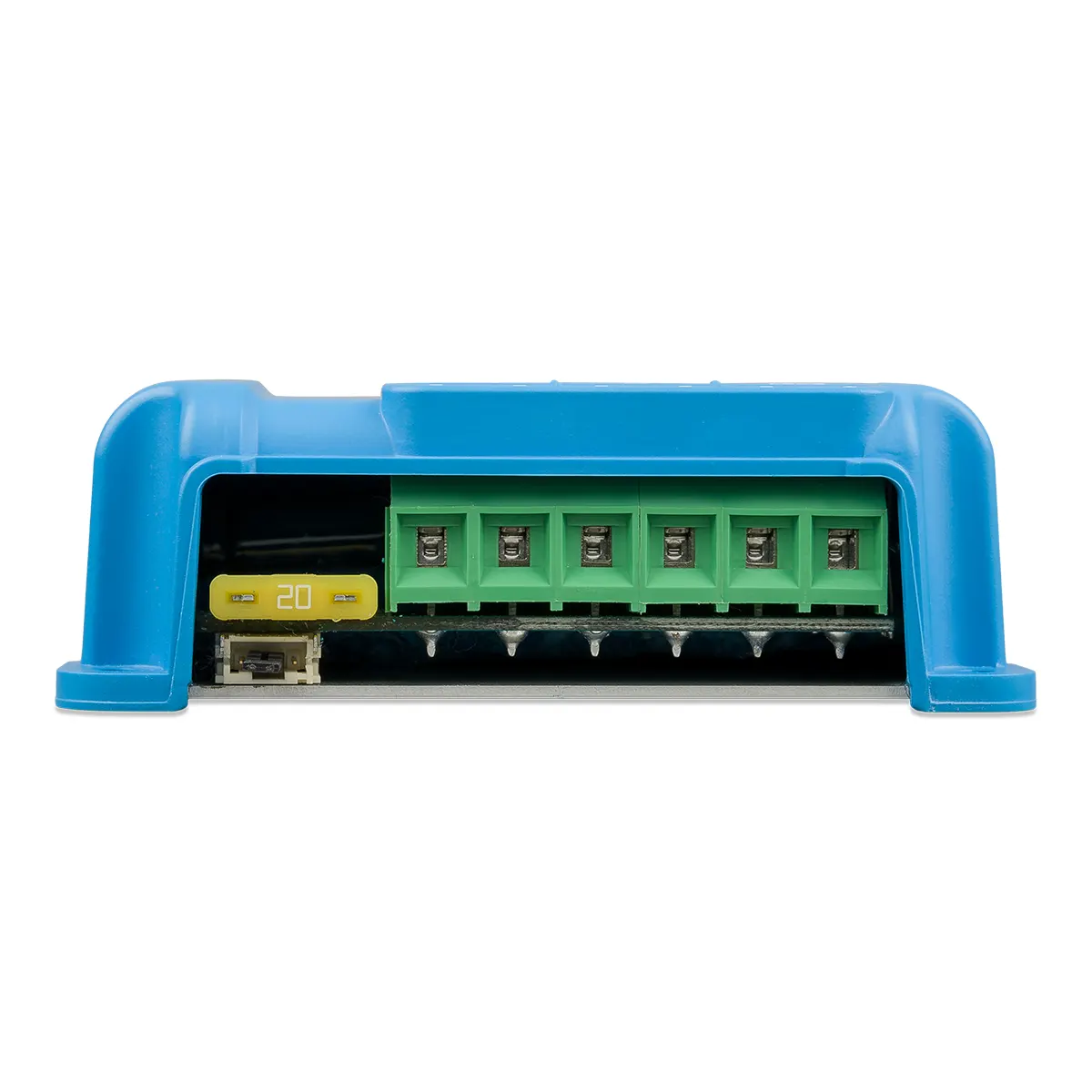1
/
of
2
Victron
Victron SmartSolar MPPT 75/15
Victron SmartSolar MPPT 75/15
Regular price
R 1,020.00
Regular price
Sale price
R 1,020.00
Unit price
/
per
Tax included.
Shipping calculated at checkout.
No reviews
Couldn't load pickup availability
Victron SmartSolar Charge Controller with Load Output MPPT 75/15
Product Features:
-
Bluetooth Smart built-in
- The wireless solution to set-up, monitor, update and synchronise SmartSolar Charge Controllers.
-
VE.Direct
- For a wired data connection to a Color Control GX, other GX products, PC or other devices.
-
Ultra-fast Maximum Power Point Tracking (MPPT)
- Especially in case of a clouded sky, when light intensity is changing continuously, an ultra-fast MPPT controller will improve energy harvest by up to 30 % compared to PWM charge controllers and by up to 10 % compared to slower MPPT controllers.
-
Load output
- Over-discharge of the battery can be prevented by connecting all loads to the load output. The load output will disconnect the load when the battery has been discharged to a pre-set voltage (48 V model: interface with a relay).
Alternatively, an intelligent battery management algorithm can be chosen: see Battery Life. The load output is short circuit proof.
- Over-discharge of the battery can be prevented by connecting all loads to the load output. The load output will disconnect the load when the battery has been discharged to a pre-set voltage (48 V model: interface with a relay).
-
Battery Life: intelligent battery management
- When a solar charge controller is not able to recharge the battery to its full capacity within one day, the result is often that the battery will continually be cycled between a ‘partially charged’ state and the ‘end of discharge’ state. This mode of operation (no regular full recharge) will destroy a lead-acid battery within weeks or months.
The Battery Life algorithm will monitor the state of charge of the battery and, if needed, day by day slightly increase the load disconnect level (i.e. disconnect the load earlier) until the harvested solar energy is sufficient to recharge the battery to nearly the full 100 %. From that point onwards, the load disconnect level will be modulated so that a nearly 100 % recharge is achieved about once every week.
- When a solar charge controller is not able to recharge the battery to its full capacity within one day, the result is often that the battery will continually be cycled between a ‘partially charged’ state and the ‘end of discharge’ state. This mode of operation (no regular full recharge) will destroy a lead-acid battery within weeks or months.
Specifications:
- Battery voltage (auto select) - 12/24 V
- Rated charge current - 15 A
- Nominal PV power, 12 V (See Note 1a,b) 220 W
- Nominal PV power, 24 V (See Note 1a,b) 440 W
- Max. PV short circuit current (See Note 2) 15 A
- Automatic load disconnect - Yes
- Max. PV open circuit voltage - 75 V
- Peak efficiency - 98 %
- Self-consumption – load on 12 V: 19 mA 24 V: 16 mA
- Self-consumption – load off 12 V: 10 mA 24 V: 8 mA
- Charge voltage 'absorption' 14,4 V / 28,8 V (adjustable)
- Charge voltage 'float' 13,8 V / 27,6 V (adjustable)
- Charge algorithm - multi-stage adaptive
- Temperature compensation -16 mV / °C resp. -32 mV / °C
- Max. continuous load current - 15 A
- Protection - Output short circuit / Over temperature
- Operating temperature -30 to +60 °C (full rated output up to 40 °C)
- Humidity - 95 %, non-condensing
- Data communication port - VE.Direct (see the data communication white paper on our website)
- Data stored - Battery voltage, current and temperature, as well as load output current, PV voltage and PV current.
- Number of days trends data is stored - 46
NOTES:
- If more PV power is connected, the controller will limit input power.
- The PV voltage must exceed Vbat + 5 V for the controller to start. Thereafter the minimum PV voltage is Vbat + 1 V
- A PV array with a higher short circuit current may damage the controller.
Important Notice: Click Here
Share




